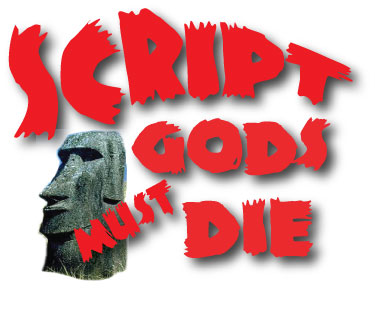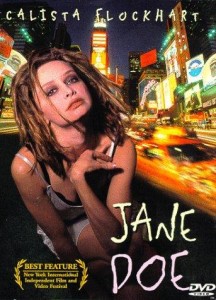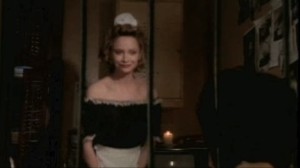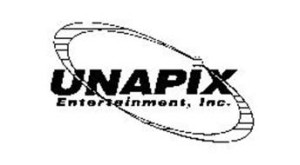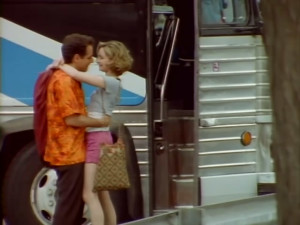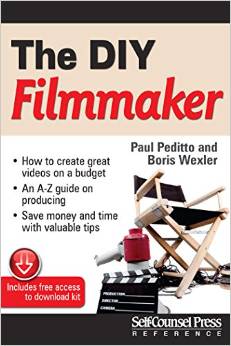You often see blog posts on changing technology, the genesis from Indie-budgeted movies filmed on 16 and 35mm to the digital realm of the 5D and Alexa. But what about the effect that has on screenplay writing? In writing this book on micro-budget screenwriting, I’m looking at how technology has changed screenwriting. I want to highlight it with some personal examples. For instance, what are the differences in trying to write a $250,000 Calista Flockhart vehicle shot on Super 16 vs. writing for “no-name” Chicago actors at a $44,000 budget? What are the changes going from a culture of Indie-filmmaking to digital D.I.Y. in terms of the script writing process? Let’s start by looking at Jane Doe; how it got made; how it ended up at every Blockbuster and Hollywood Video store in the country, making a couple million bucks along the way. All this despite our best efforts to make EVERY DECISION CONCEIVABLE TO FUCK OURSELVES UP. Here’s Part 1, tip of the iceberg.
I am a sucker for long titles(see above). How about this one: A Fire Was Burning Over The Dumpling House One Chinese New Year. That’s a tough one for a movie marquee, but it works fine for a play title. The genesis of Jane Doe starts here. Dumpling House was a play I wrote about Claire G, a heroin-addict and my girlfriend, back in New York circa 1983. It won’t spoil a 30 year-old play and 15 year-old movie to tell you things didn’t turn out well for her. I wrote the play two days after we buried her. I wrote it in four days. Three months later it was being performed in Chicago at igLoo, the Theatrical Group. This was a company formed by my brother Chris and his then-wife Maria Tirabassi. They took on the lead roles and the play, appropriately for our micro-budget purposes, was put up for the price of a couple pizzas. Costumes were made from scratch or found in dumpsters. Sets were created ladders, scraps of wood found in dumpsters, a mattress on the floor, a beat-down table and chairs. Dumpster Theater, and how. It was my first play, and the company’s second.
It made a noise.
The way to break through into the consciousness of people is to take a personal story and turn it into the universal. That process of transmutation is called writing. When what resonates for you, personally, resonates for someone in the dark of the theater, you’re on the right path. The play was about addiction. Addiction has been done and done, in both theater and film. But what about the POV of the person living with the addict? I didn’t even know the term enabler then, but what about showing the cost of addiction, the hell and insanity of it, the not knowing what to do. Lots of folks with substance abuse problems in lots of families. So this one hit close to home. Of 10 folks who saw it, 5 were in tears when lights came up.
It ran months in Chicago, then followed my brother and his wife to Los Angeles for a production there. Then back to Chicago for a return run, ending sometime in 1988.
And then it sat for seven years.
Unpublished, no other theatrical performance was done of it. It wasn’t until I started writing screenplays in 1995 that I adapted it for film. My brother had also shifted to thoughts of movies and championed Dumpling House (retitled Pictures Of Baby Jane Doe). I was working on the casino boat and wrote it gloriously ignorant of all things screenwriting. Didn’t concern myself one iota about mundane aspects like budget. Dedicated to Claire G, it had to be shot in New York and Atlantic City.
I continued dealing dice in Aurora, Illinois, leaving the trivial details of fundraising to my producer brother who swore a blood oath to make it happen. But…how do you make it happen? Well, start by hitting up the folks. Dad, being a doc filmmaker himself, started the ball rolling, pumping in first money. Hey Dad, you ruuuule! Mom happened to run one of the top vintage stores in New York City and offered to fully costume the movie plus use her store for a location, and some cash too. Hey Mom, you’re a giver! With that $90,000, Chris schemed to make the movie under a SAG Limited X contract. Ultra-low budget. I was just the craps dealer-writer back then and didn’t question his figures when he announced we could do it, with the script AS IS, for the 90K. And so we set out with the full intention to shoot it for that, until Unapix entered the picture.
Unapix Entertainment was a video distributor whose credits include—I shit you not—Judy Tenuta: Un-Butt Plugged in Tex-Ass!, Jack Frost 2-Revenge of the Killer Mutant Snowmen, and the underrated My Brother The Pig. With a track record like that, little wonder they went under in 2001. Of course in 1995 we didn’t know we were getting into bed with hacks.
Life Lesson 662A: Know who you’re getting into bed with!
My brother and I were summoned to the offices of Unapix Entertainment. This was mid-town Manhattan, a Park Avenue address. Escorted into the President’s office and sat down in a pair of 500 buck black mesh-back chairs, the Pres of Unapix came in, shook our hands and sat behind his oaken Gorman desk. My brother and I also sat, like a pair of M & M’s, plain and peanut. The Pres proceeded to tell us how tremendously impressed he was with the script. Very moving story. Did it move me when I wrote it, he wanted to know. “Well, my girlfriend died, so…you know….” Yes indeed, powerful stuff. Thus, the reason for this meeting. He wanted in. He knew we had full prepped for a 90K ultra-low budget shoot but how about if Unapix came in. Then he slide a check across the table made out for $150,000 dollars.
It’s quite something, to stare at a $150,000 check that someone wants to give you. How many of you would have the intestinal fortitude to push it away?
If only we had….
